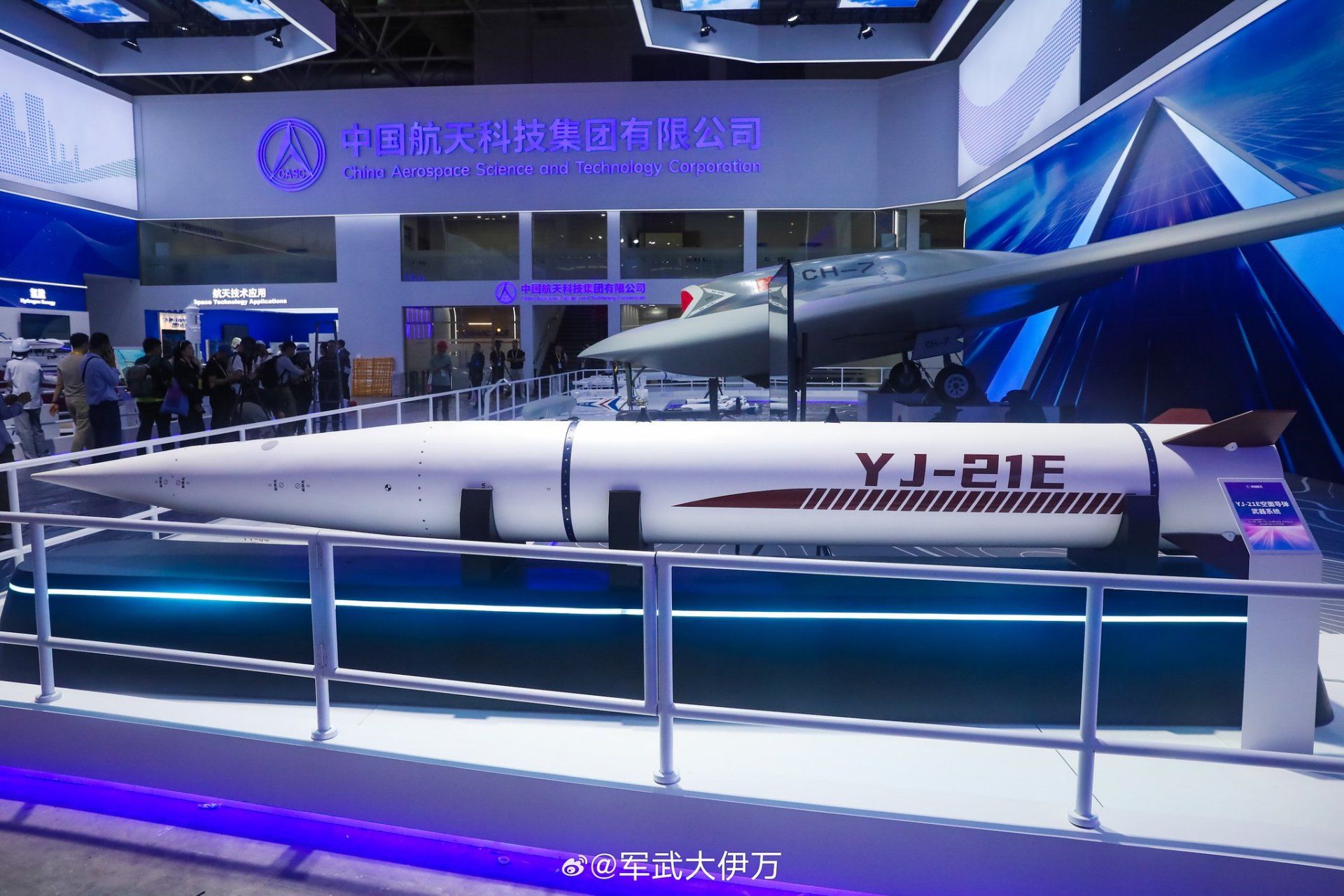Breaking News
YJ-21 Missile Underscores China’s Hypersonic Weaponry Leadership.
At the 15th China International Aviation and Aerospace Exhibition (Zhuhai Air Show 2024), China revealed the YJ-21 (Ying Ji 21 or "Eagle Strike 21"), a hypersonic anti-ship ballistic missile that underscores its commitment to advancing cutting-edge military technology. The YJ-21 is a centerpiece of China’s expanding anti-access/area denial (A2/AD) arsenal, designed to challenge naval power projection and deter potential adversaries in strategically sensitive maritime regions.
Follow Army Recognition on Google News at this link

China's YJ-21 hypersonic missile, designed for precision strikes against high-value maritime targets, showcases advanced speed and maneuverability, redefining the future of naval warfare. (Picture source: Weibo)
The YJ-21 represents a convergence of hypersonic technology and precision-guided munitions, offering unprecedented capabilities for engaging high-value maritime targets such as aircraft carrier groups. It is a solid-fueled, two-stage missile with unique aerodynamic and propulsion systems optimized for hypersonic flight.
The missile achieves cruise speeds exceeding Mach 6 during its midcourse phase and reaches terminal velocities up to Mach 10. These hypersonic speeds dramatically reduce the response time available to an adversary’s missile defense systems, making interception exceedingly difficult. The missile’s high-speed trajectory is coupled with a quasi-ballistic flight path, allowing it to execute high-G maneuvers during its terminal approach. This capability ensures precision strikes against moving targets while reducing the effectiveness of enemy interception systems.
Equipped with a sophisticated inertial navigation system (INS) integrated with satellite guidance, the YJ-21 delivers exceptional accuracy over its operational range of approximately 1,500 kilometers. Its warhead options likely include high-explosive or submunitions tailored for maximum damage against large naval platforms. Additionally, its onboard seekers, possibly including dual-band radar and infrared systems, enable target discrimination in contested environments.
The YJ-21 was initially observed on China’s advanced Type 055 Renhai-class guided-missile destroyers, which feature vertical launch systems (VLS) capable of accommodating large missiles. More recently, the missile has been adapted for air-launch platforms, specifically the H-6K strategic bomber. The H-6K, a modernized derivative of the Soviet-era Tu-16, can carry up to four YJ-21 missiles, significantly extending their operational range and deployment flexibility.
The dual-platform compatibility of the YJ-21 underscores its strategic versatility. Sea-launched variants provide robust littoral and blue-water strike capabilities, while air-launched versions enhance China’s power projection and rapid-strike capacity in disputed maritime regions.
The introduction of the YJ-21 reflects China’s evolving strategy to counter adversarial naval forces, particularly the U.S. Navy’s carrier strike groups, which play a central role in power projection across the Indo-Pacific. By integrating hypersonic speeds, maneuverability, and precision targeting, the YJ-21 is designed to neutralize the advantages of heavily defended naval platforms.
Its deployment significantly enhances China’s anti-access/area denial (A2/AD) capabilities by creating a highly contested operational environment within the missile’s range. This development complements existing systems, such as the DF-21D “carrier killer” missile and DF-17 hypersonic glide vehicle, reinforcing China’s layered defense strategy. In addition, the YJ-21’s mobility and ability to be deployed on diverse platforms complicate adversary calculations, as it reduces the predictability of China’s force projection capabilities.
The YJ-21 hypersonic anti-ship missile represents a transformative development in modern naval warfare. With its extreme speed, precision guidance, and advanced maneuverability, it is a potent weapon designed to challenge traditional naval doctrines and reshape power dynamics in the Indo-Pacific. Its public unveiling at the Zhuhai Air Show 2024 serves not only as a demonstration of China’s technological capabilities but also as a strategic message to its rivals regarding its growing dominance in hypersonic and maritime strike technologies.


























